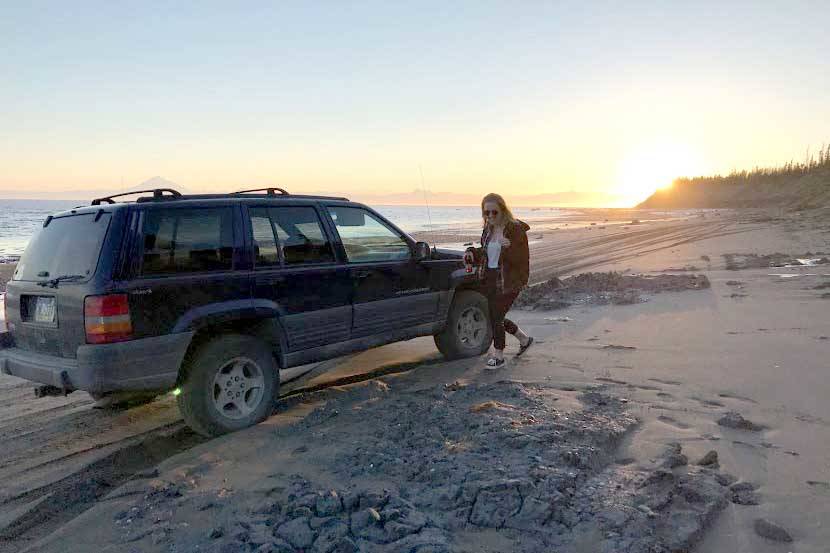I bought my 1996 Jeep Grand Cherokee when I first moved to Alaska after a failed fling with a 1992 Cherokee that had a leaky engine and a sticky shifter. Over the course of our three years together, I have driven it tens of thousands of miles.
From the first thousand spent commuting between Sterling and Kenai to a recent 864 driven from Seward to McCarthy and back, the same thought runs through my head.
“Is my car going to make it?”
I have bouts with the check engine light that seem to start as soon as I think I’m safe.
I’ll switch out some spark plugs, change the oil, fiddle with this and the light will go off for a while. A few months will pass and the tiniest of thoughts will drive through my mind — “Huh, haven’t seen my check engine light in a bit.” Within days, it starts shining bright again.
I lost one of my back seats to the Central Peninsula Landfill and another to the woods outside of Seward. Two is company, three is a crowd — unless they’re comfortable with the makeshift seat I create out of some plywood and pillows. Don’t worry, you can still buckle up.
I’ve been finagling with my driver side door from the start, struggling to make the latch line up with whatever keeps it latched. I’ve fabricated, duct taped and glued so many things to the door, but it turns out the best compromise was to remove the panel entirely. Now, I have direct access to all the latches and levers that let me open and close my door safely.
In the face of all these blemishes and ailments, I hop into the driver’s seat again and again, mile after mile. No door panel makes my car loud, no back seat makes my carpool selective, but I change the oil regularly and address every mechanical issue, so I’m counting down the days till I can celebrate reaching 200,000.
Until then, I do worry, especially as I hit the road to McCarthy. Sixty unpaved miles with no cellphone service and a half marathon to make it to.
We made it, with Taylor Swift’s latest album on repeat loudly over the sound of wind flowing through my driver side door. We got to the end of the road and left my car for a weekend in Wrangell St. Elias National Park.
Being in Kennecott or McCarthy was unusual. We traveled between two small, but bustling, towns without access to my car or cellphone. AT&T doesn’t work and the only public access is the footbridge at the end of the McCarthy Road.
Instead we relied on friends, public transportation and the random stranger with a Verizon cellphone to interact and travel. I stumbled across friends in town or assumed others would know where to find me.
I was lounging around before a race with a 2 p.m. start time before realizing the only shuttle that would get me there in time was leaving in 10 minutes.
I’m not much of a contender, never nervous about winning or losing, but always find myself on edge before a race. I participate in them to keep myself accountable, so as long as I show up I’ve accomplished my goal, but the prerace jitters made me bounce off the wall and nearly miss the last shuttle.
I’m a bit older than my Jeep, four or so years, and I worry about my body in the same way. What if I don’t make it those last few miles? I’ve been finagling with different exercises and techniques, ignoring a pain in my knee or focusing on a twinge in my ankle. But, just like my car, I made it the 13.1 miles to the end of the road in McCarthy with no sign of a check engine (or knee or ankle or foot) light.
Afterward, despite my worry, my Jeep and I drove through the second half of the trip, the long drive home, without consequence. We made it past the dirt road, through Glennallen and Anchorage, and back to downtown Seward. So, I’ll be taking a page from that book in my glove box. Next up: I’ll run the second half, or 26.2 miles, at the end of the month up in Fairbanks.
I’ll be flying to this one, though.

